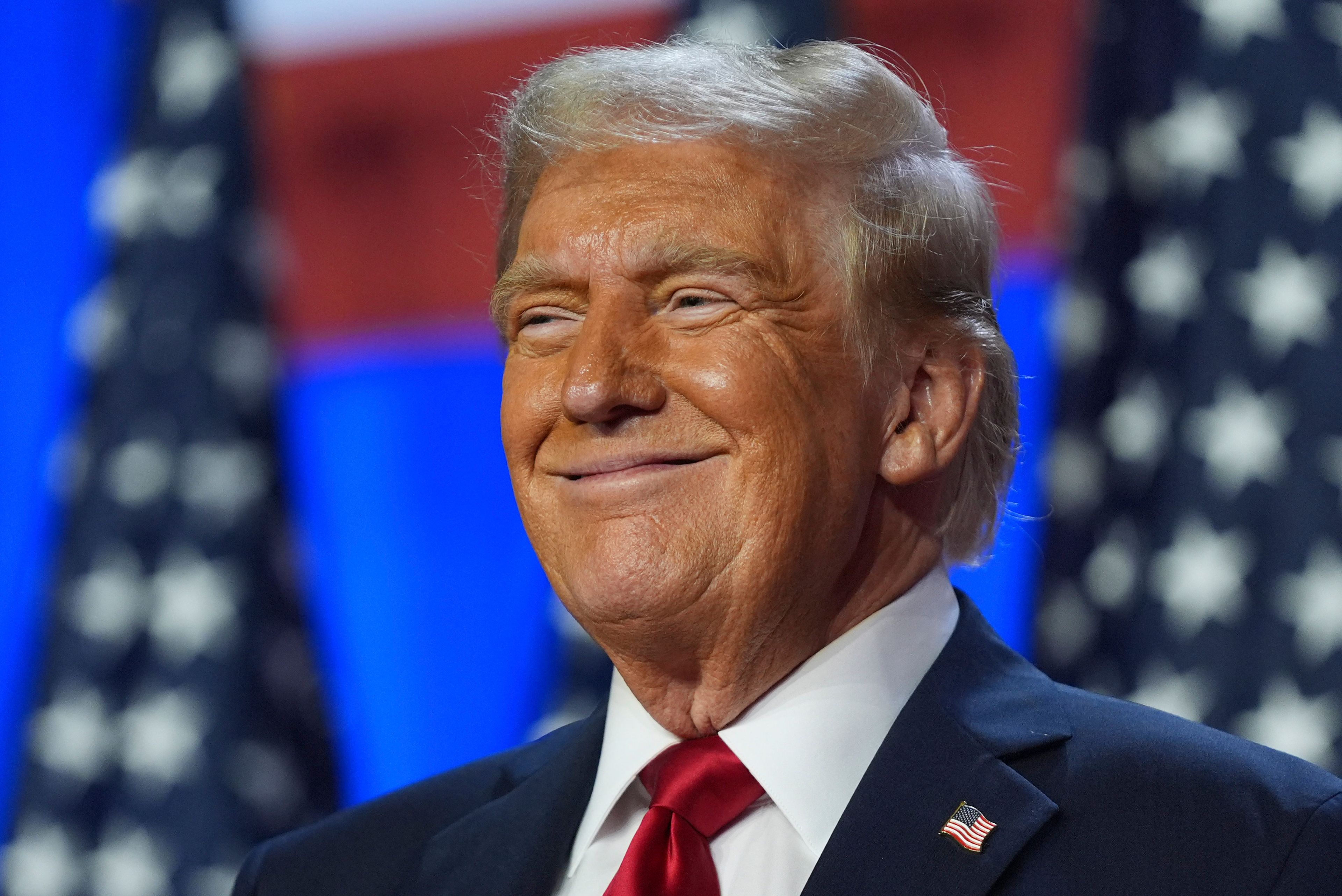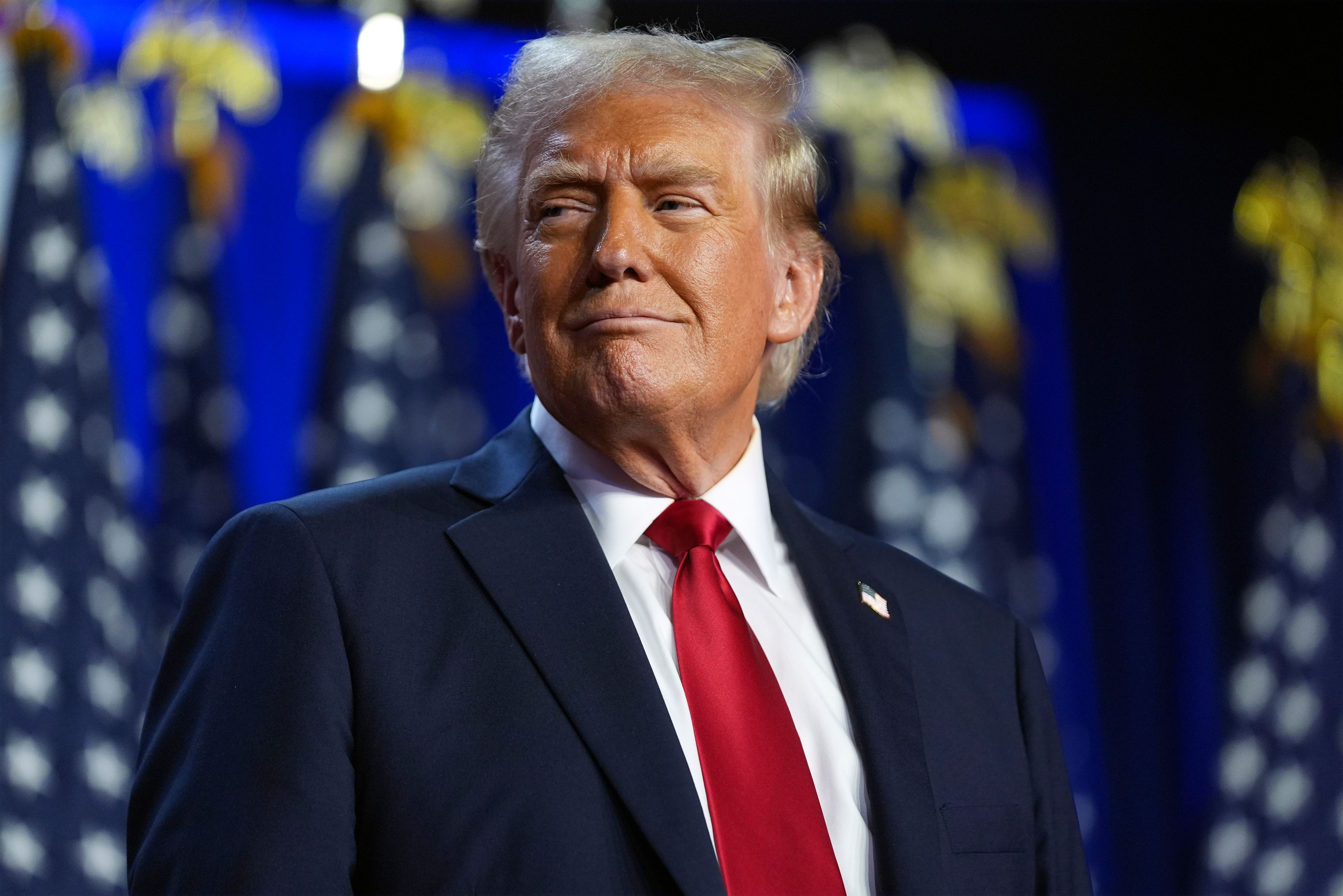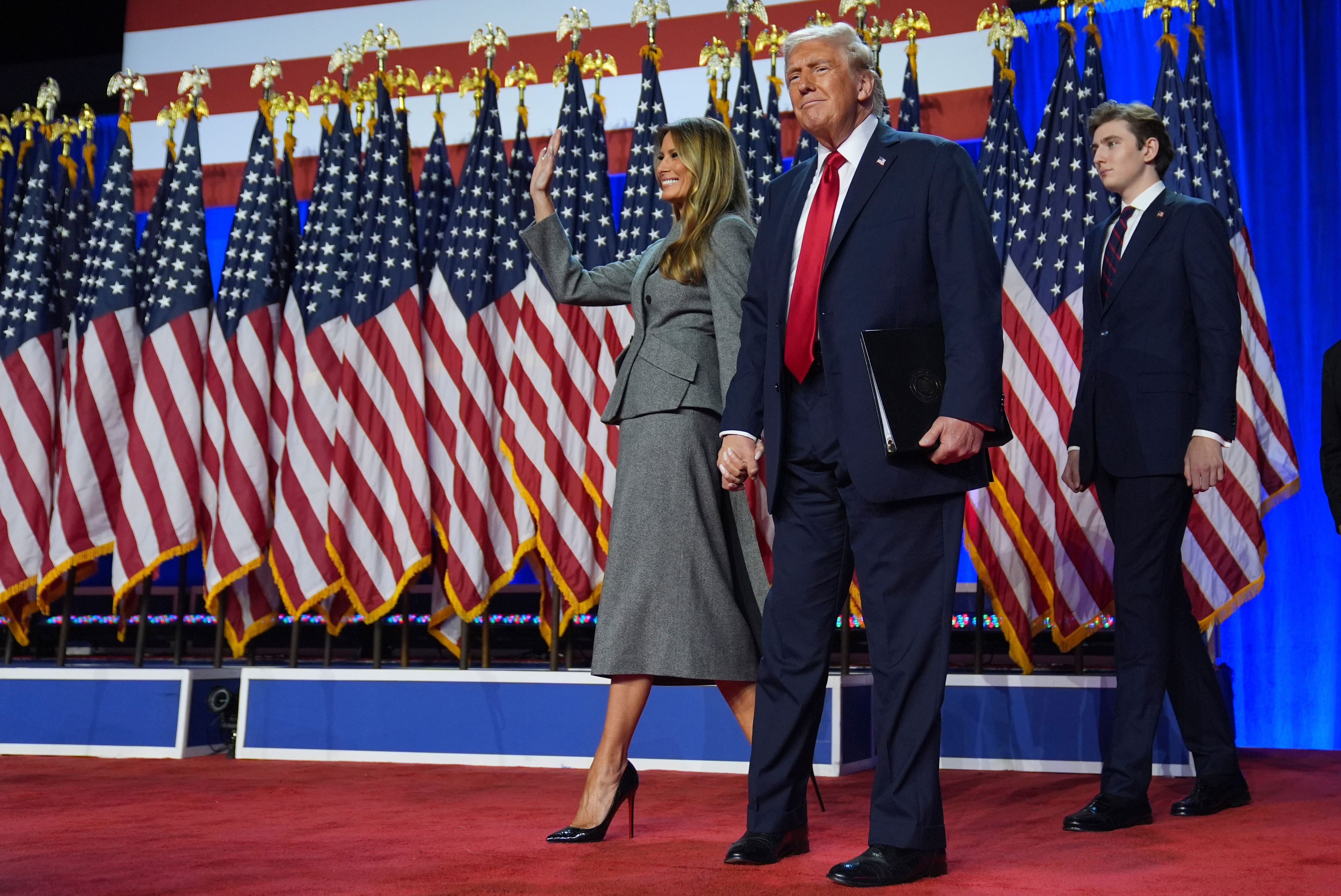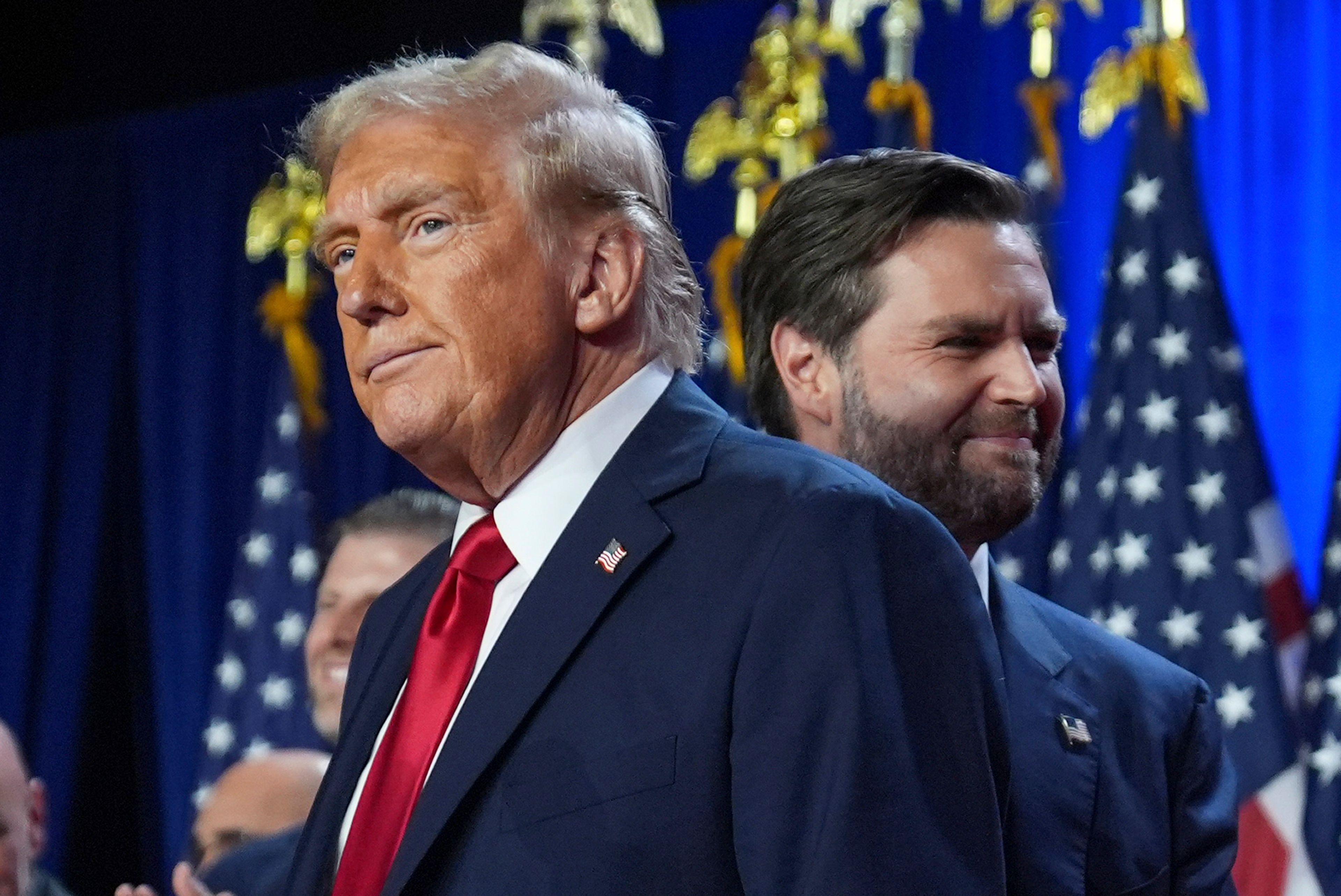Trump wins the White House in a political comeback rooted in appeals to frustrated voters
Donald Trump, in a historic political comeback, has been elected the 47th president of the United States. His victory, marked by a sweeping win in key swing states, signals a return to power in an unusual pattern of two non-consecutive terms.
WASHINGTON — Donald Trump was elected the 47th president of the United States on Wednesday, an extraordinary comeback for a former president.
With a win in Wisconsin, Trump cleared the 270 electoral votes needed to clinch the presidency. He won Michigan on Wednesday afternoon, sweeping the “blue wall” along with Pennsylvania — the one-time Democrat-leaning, swing states that all went for Trump in 2016 before flipping to President Joe Biden in 2020.
His Democratic rival, Vice President Kamala Harris, called Trump on Wednesday afternoon to concede the race and congratulate him. A short time later, Biden also called Trump to congratulate him and to invite the president-elect to the White House, formally kicking off the transition ahead of Inauguration Day, the White House said. Biden also called Harris.
Foreign leaders called Trump, too, including Israeli Prime Minister Benjamin Netanyahu and French President Emmanuel Macron.
The victory validates Trump's bare-knuckles approach to politics. He had attacked Harris in deeply personal terms as he pushed a picture of a country overrun by violent migrants. The coarse rhetoric, paired with an image of hypermasculinity, resonated with angry voters — particularly men — in a deeply polarized nation.
“I want to thank the American people for the extraordinary honor of being elected your 47th president and your 45th president," Trump told throngs of cheering supporters in Florida even before his victory was confirmed.
In state after state, Trump outperformed what he did in the 2020 election while Harris failed to do as well as Joe Biden did in winning the presidency four years ago. Upon taking office again, Trump will work with a Senate that will now be in Republican hands, while control of the House hadn’t been determined.
“We’ve been through so much together, and today you showed up in record numbers to deliver a victory,” Trump said. “This was something special and we’re going to pay you back."
The U.S. stock market, Elon Musk’s Tesla, banks and bitcoin all stormed higher Wednesday, as investors looked favorably on a smooth election and Trump returning to the White House. In his second term, Trump has vowed to pursue an agenda centered on dramatically reshaping the federal government.
The results cap a historically tumultuous and competitive election season that included two assassination attempts targeting Trump and a shift to a new Democratic nominee just a month before the party’s convention. Trump will inherit a range of challenges when he assumes office Jan. 20, including heightened political polarization and global crises that are testing America’s influence abroad.
His win against Harris, the first woman of color to lead a major party ticket, marks the second time he has defeated a female rival in a general election. Harris, the current vice president, rose to the top of the ticket after Biden exited the race amid alarm about his advanced age. Despite an initial surge of energy around her campaign, she struggled during a compressed timeline to convince disillusioned voters that she represented a break from an unpopular administration.
Trump is the first former president to return to power since Grover Cleveland regained the White House in the 1892 election. He is the first person convicted of a felony to be elected president and, at 78, is the oldest person elected to the office. His vice president, 40-year-old Ohio Sen. JD Vance, will become the highest-ranking member of the millennial generation in the U.S. government.
There will be far fewer checks on Trump when he returns to the White House. He has plans to swiftly enact a sweeping agenda that would transform nearly every aspect of American government. His GOP critics in Congress have largely been defeated or retired. Federal courts are now filled with judges he appointed. The U.S. Supreme Court, which includes three Trump-appointed justices, issued a ruling this year affording presidents broad immunity from prosecution.
While Harris focused much of her initial message around themes of joy, Trump channeled a powerful sense of anger and resentment among voters.
He seized on frustrations over high prices and fears about crime and migrants who illegally entered the country on Biden’s watch. He also highlighted wars in the Middle East and Russia’s invasion of Ukraine to cast Democrats as presiding over — and encouraging — a world in chaos.
It was a formula Trump perfected in 2016, when he cast himself as the only person who could fix the country’s problems, often borrowing language from dictators.
“In 2016, I declared I am your voice. Today I add: I am your warrior. I am your justice. And for those who have been wronged and betrayed, I am your retribution,” he said in March 2023.
One defining moment of the campaign came in July when a gunman opened fire at a Trump rally in Butler, Pennsylvania. A bullet grazed Trump’s ear and killed a supporter. His face streaked with blood, Trump stood and raised his fist in the air, shouting “Fight! Fight! Fight!” Weeks later, a second assassination attempt was thwarted after a Secret Service agent spotted the barrel of a gun poking through the greenery while Trump was playing golf.
After his loss in 2020, his political future was uncertain. From his Mar-a-Lago resort in Florida, Trump — aided by some elected Republicans — worked to maintain his political relevance. Rep. Kevin McCarthy, the California Republican who then led his party in the U.S. House, visited Trump soon after he left office, essentially validating his continued role in the party.
As the 2022 midterm election approached, Trump used the power of his endorsement to assert himself as the unquestioned leader of the party. His preferred candidates almost always won their primaries, but some went on to defeat in elections that Republicans viewed as within their grasp. Those disappointing results were driven in part by a backlash to the Supreme Court ruling that revoked a woman’s constitutional right to an abortion, a decision aided by Trump-appointed justices. The midterm election prompted questions within the GOP about whether Trump should remain the party’s leader.
As he prepares to return to the White House, Trump has vowed to swiftly enact an agenda that would transform nearly every aspect of American government. That includes plans to launch the largest deportation effort in the nation’s history, to dramatically expand the use of tariffs and to again pursue a zero-sum approach to foreign policy that threatens to upend longstanding foreign alliances, including the NATO pact.
When he arrived in Washington 2017, Trump knew little about the levers of federal power. His agenda was stymied by Congress and the courts, as well as senior staff members who took it upon themselves to serve as guardrails.
This time, Trump has said he would surround himself with loyalists who will enact his agenda, no questions asked, and who will arrive with hundreds of draft executive orders, legislative proposals and in-depth policy papers in hand.
Connect with the Southeast Missourian Newsroom:
For corrections to this story or other insights for the editor, click here. To submit a letter to the editor, click here. To learn about the Southeast Missourian’s AI Policy, click here.















